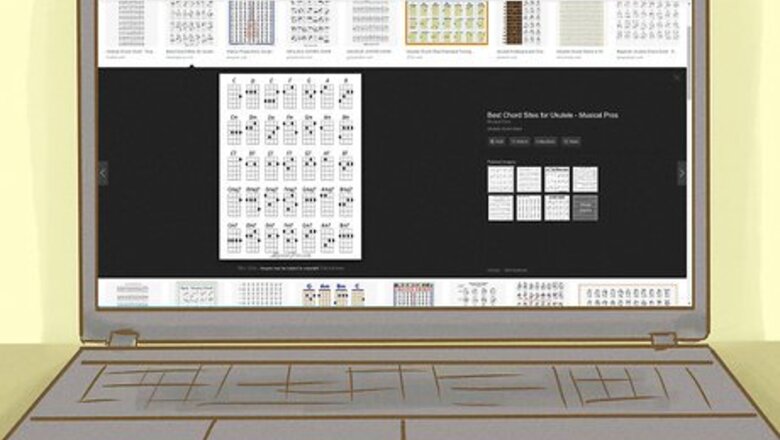
views
X
Research source
Reading Chord Charts
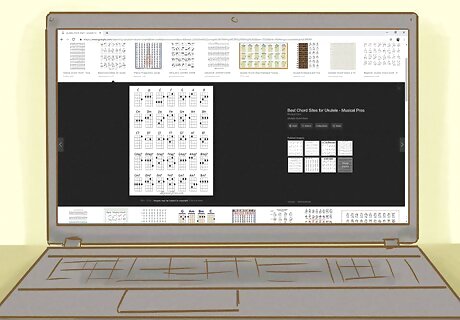
Find chord charts for the chords you want to learn. You don't have to know how to read sheet music to play the ukulele. Chord charts are available online for free, as well as on apps that you can download on your mobile device. If you're just starting out, you'll want to get chord charts for C, G, F, and D. These are basic major chords that are used in many ukulele songs. You should also get chord charts for A minor and E minor. These are 2 minor chords that come up frequently in easier ukulele songs.Variation: You can also use text chords instead of charts. Rather than a visual representation of the chord shape, a text chord merely gives you the numbers of the frets. For example, the text chord for C major would be "0003," indicating that the A string is fretted at the third fret and the rest of the strings are played open. Since text chords don't include fingerings, they may not provide enough guidance for beginners.
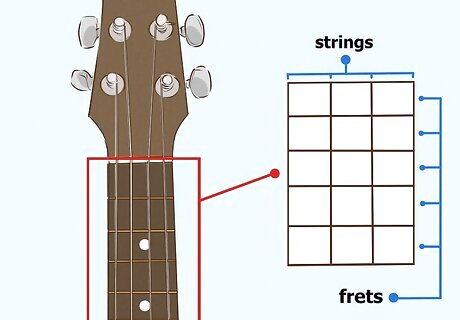
Identify the strings and frets represented on the chord chart. A chord chart is a simple diagram of the strings and first 4 frets of your ukulele. Hold your ukulele upright in front of you so that the strings are facing you. You'll see that the grid formed by the first 4 frets and the strings looks just like the chord chart. Chord charts are designed for GCEA tuning, which is the most common tuning for ukuleles. The vertical lines on a chord chart represent each string, starting from G and going from left to right. The horizontal lines on a chord chart are the frets on your ukulele. Usually, chord charts show the first 4 frets. For chords further down the fretboard, you'll see numbers on the left-hand side of the chord chart that let you know which fret the chart starts on so you can reposition your hands.Lefties Beware: Most chord charts are formatted for right-handed players by default. If you play the ukulele left-handed, you'll need to mentally flip the chart. This can be a challenge for many beginners. Try searching specifically for left-handed chord charts.
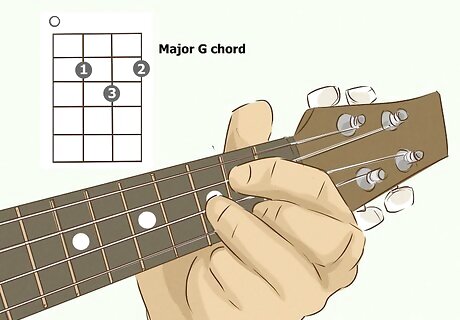
Place your fingers on the frets to match the dots on the chart. Each chord chart has a dot to represent where your fingers are supposed to fret your ukulele to play the chord represented. At the bottom of the chord chart, you'll see numbers that represent which finger frets which string. Some chord charts put the number inside the dot. Fingers are numbered the same as they are for guitar: 1 is your index finger, 2 is your middle finger, 3 is your ring finger, and 4 is your pinky. The fingerings shown are just suggestions – if something else is more comfortable for you, feel free to use it. However, keep in mind that many of the standard fingerings are designed to make transitioning to other chords easier. If you use your own fingering, you may find it more difficult to switch between different chord shapes later on. Barre chords are indicated with a curved line over all the barred strings. The finger numbers at the bottom of the chart will be the same for all the barred strings. Play these chords by pressing down multiple strings with one finger (usually your index finger) as shown.
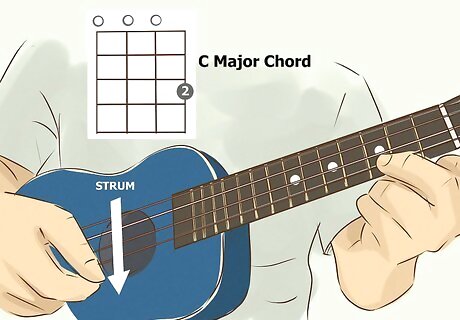
Strum the strings as indicated on the chart. Once you're fretting the right strings, strum your ukulele strings lightly with the thumb of your other hand to play the chord. Strings that aren't fretted will either have an "O" over them, indicating that they are played openly, or an "X" which indicates they shouldn't be played at all. When you're just learning the chord, strum each string separately to make sure they all make a clear sound. If they sound buzzed or muted, you might be accidentally touching them with your finger. Adjust your hand until the string plays clearly, then try the chord again. The ukulele's size can make it difficult to avoid hitting strings that aren't supposed to be played. You can place a finger lightly over the string just above the nut to mute it. Then it won't matter if your strumming hand hits it or not.
Learning Basic Chords
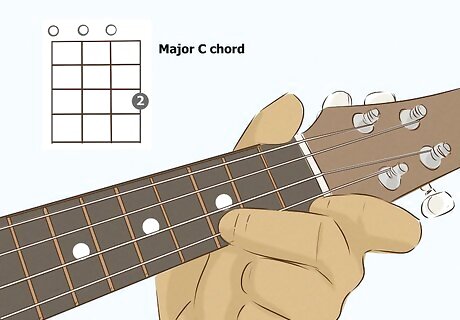
Start by playing a C major chord. The C major chord (typically referred to simply as C) is the easiest chord to play on the ukulele. To play it, simply place your third (ring) finger on the third fret of the A string. All other strings are played open. Use the tip of your finger to fret the string. Otherwise, you may find that you inadvertently mute the E string.
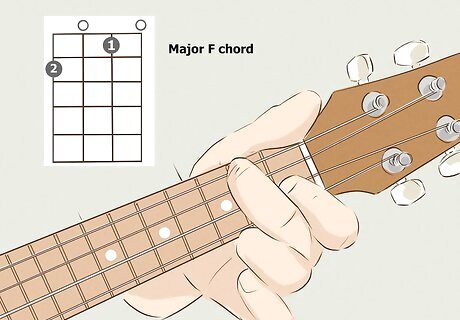
Use your first and second fingers to play F. You only used one finger to play C, and you only need two fingers to play F. Place your Once you have C and F under your belt, you're at a good place to practice chord transitions. Keep your fingers in position over the strings. Play a C, then lift your third finger up at the same time you press down your first and second fingers to play and F. Then lift those 2 fingers up as you press down your third finger to play C again. Switch back and forth until the transition begins to feel natural.
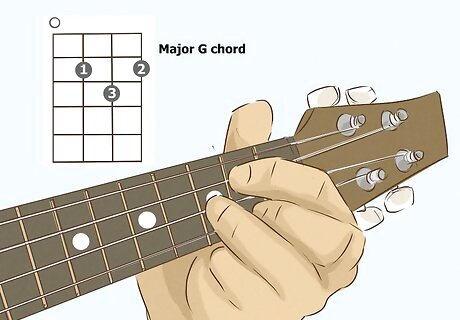
Move on to the G major chord. For this chord, place your third finger on the third fret of the E string. Then place your first finger on the second fret of the C string and your second finger on the second fret of the A string. The G string is played open. If using 3 fingers for G is awkward for you, try making a bar across all strings but G with your index finger. Then place your middle finger on the third fret of the E string.Play some songs! There are several popular songs with ukulele arrangements that only use C, F, and G. Try "I Still Haven't Found What I'm Looking For" (U2), "Red, Red Wine" (UB40), or "Blowin' in the Wind" (Bob Dylan).
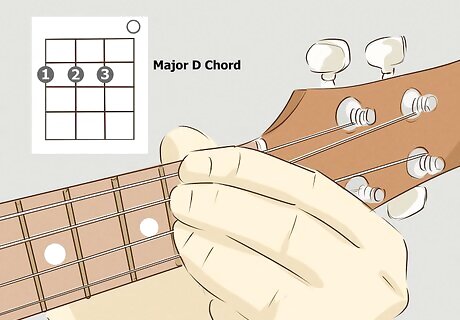
Line up your first 3 fingers to play a D. For the D chord, you'll use your G, C, and E strings, playing the A string open. Place your first finger on the second fret of the G string, your second finger on the second fret of the C string, and your third finger on the second fret of the E string. As with G, you have an option to bar the strings instead of using 3 fingers side by side. The only problem is you can't make a bar as you did with G because you have to play the A string open. Some ukulele players play D by barring the 3 strings with their thumb – and this is perfectly acceptable if it's easier for you.
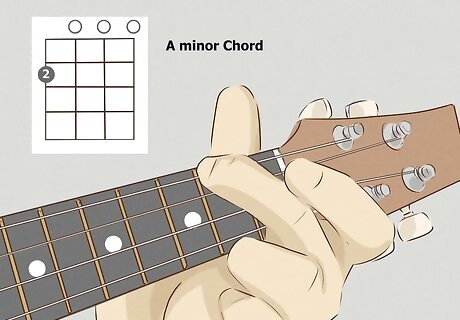
Use your middle finger to play A minor. Like C major, A minor is a simple ukulele chord that only uses one finger. Place your second finger on the second fret of the G string and play all the other strings open. It's as easy to transition between C major and A minor as it was to transition between C and F. You'll find an even easier transition between A minor and F, because you only have to lift or lower your first finger – your second finger stays in the same place.Learn More Songs! The ukulele arrangements of many popular songs only use C, Am, F, and G. These songs include "Let It Be" (The Beatles), "I'm Yours" (Jason Mraz), "Riptide" (Vance Joy), and "Someone Like You" (Adele).
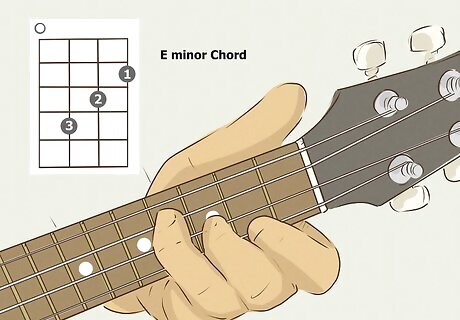
Learn E minor to round out your basic chords. To play E minor, place your first finger on the second fret of A string. Then drop your second finger onto the third fret of your E string. Stretch your middle finger over to the fourth fret of your C string. The G string is played open. E minor is one of the most natural chord shapes to form, but it can also make for some awkward transitions between other chords.
Playing Simple Songs
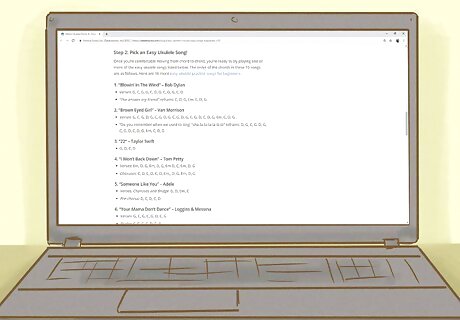
Get chords or tabs for simple ukulele songs. Once you have your basic chords down, you're ready to start playing popular songs you already know. Search online for "simple ukulele songs," "easy ukulele songs," or "simple ukulele songs" to get lists of songs you can learn. For example, the song "22," by Taylor Swift, only has 3 chords: G, D, and C. Some sites have more complex tabs that include notations for strumming patterns. When you're playing your first songs, don't worry about the strumming patterns – just focus on the chords. Trying to learn a complex strumming pattern before you have the chords down will get frustrating.
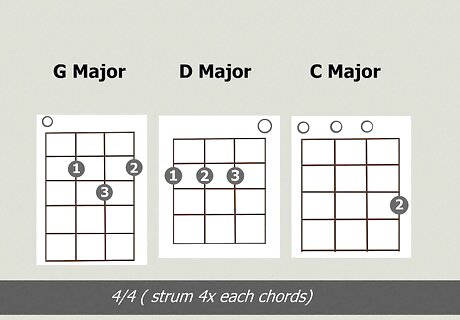
Strum each chord 4 times to play songs in 4/4 time. The simpler ukulele songs are all in 4/4 time, meaning there are 4 beats in each measure. Look at the chords in the song you want to play, and practice transitioning from one chord to the next. Once you have your transitions down, start playing the chords in the order they appear in the song. Use 4 down strums for each chord, then transition to the next chord and play it for 4 down strums. The result may not sound much like the actual song when you're playing this way, but you may be able to hear it taking shape. If you want, you can try singing the song over your accompaniment.
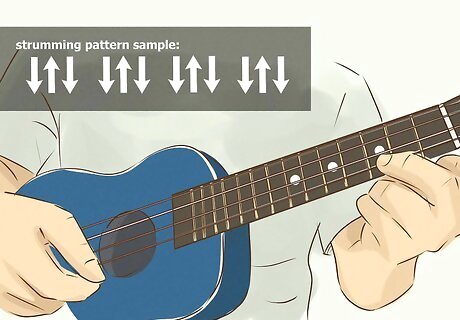
Move to a down strum on each downbeat. Once you have your chord transitions down, you're ready to focus on your strumming. Start with a simple ukulele strum by strumming down on the downbeat, then strumming lightly back up on the upbeat. The "downbeat" is essentially the beat on which you would clap your hands or tap your foot, if you were keeping the beat that way. You can use a metronome to help you with this. Search on your mobile device for a free metronome app to download, or use one online. Some songs use more complex strum patterns. However, this simple strumming pattern works for most songs and brings your playing closer to that stereotypical "ukulele sound" you probably had in mind when you started playing the instrument.Also try this rhythmic strum: down, down-up-down, down-up-down, down-up-down, down-up-down, down-up-down, down-up. Take a slight pause at each comma, fitting the strumming pattern into the rhythm of the song.
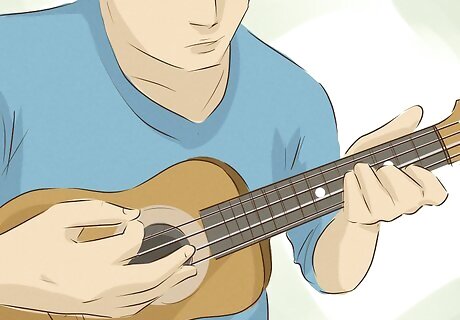
Practice coordinating your strumming pattern with chord transitions. At first, you may find that you drop a beat or lose track of your strumming pattern when you switch between chords. However, over time your strumming and fingering will become second nature. You just have to work with it. When you're just starting out, think of your strumming hand as keeping time. Strum evenly, as though your strumming hand is your metronome. Focus on moving your fingers from one chord shape to the next along with the beat. Think of more complex strumming patterns as more complex rhythms – similarly to how a drummer can simply keep time for the rest of the band, or can add various fills to make the song more interesting.















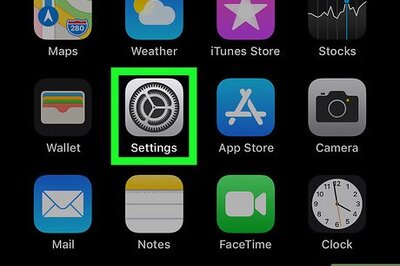


Comments
0 comment